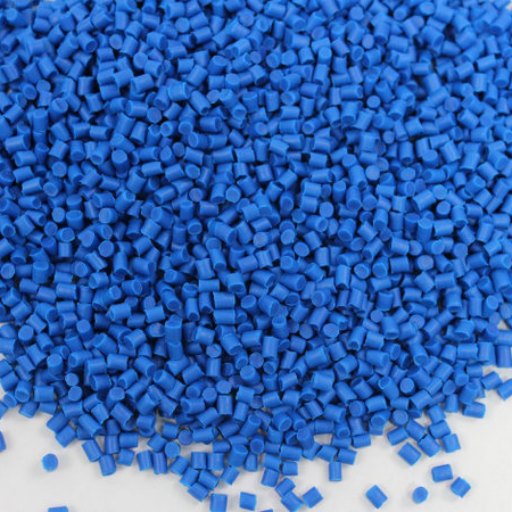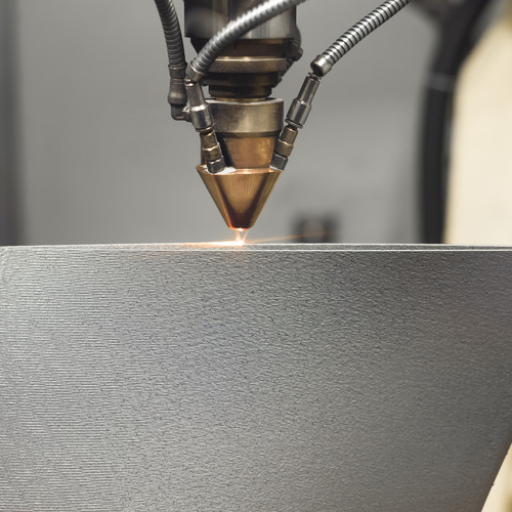In the ever-evolving landscape of manufacturing, the demand for micro injection molding machines has surged due to their unparalleled ability to produce highly precise, small-scale components. This article aims to explore the integral role of micro injection molding technology in enhancing manufacturing efficiency. By delving into the principles of precision, quality control, and innovative advancements within the sector, we will provide a comprehensive overview of how these machines are transforming production processes. Whether you are an industry professional seeking to optimize your operations, or a curious reader aiming to understand the nuances of modern manufacturing, this guide will offer detailed insights and authoritative knowledge on maximizing efficiency with micro injection molding machines.
What is Micro Injection Molding and How Does it Work?
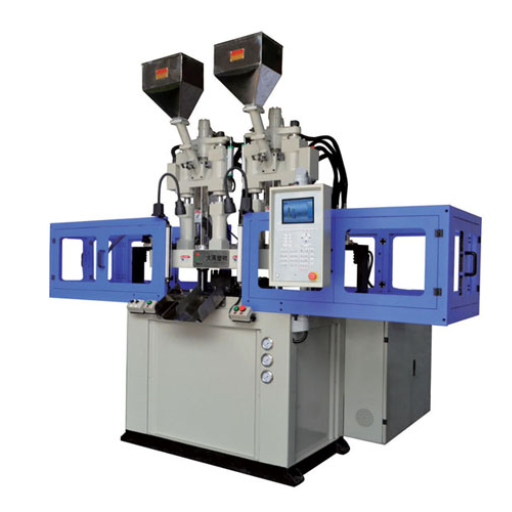
Micro injection molding is a specialized manufacturing process designed to produce miniature plastic components with extreme precision. The process involves injecting molten thermoplastic materials into a highly detailed mold cavity at high pressure. This technique is well-suited for producing parts that are both small in size and intricate in detail, often featuring complex geometries. Key stages in micro injection molding include material melting, injection into the mold, cooling and solidification, and finally, ejection of the finished part. The machines used for micro injection molding are distinctively compact and capable of delivering high precision, ensuring minimal material wastage and consistent quality control. This process is instrumental in industries such as medical devices, electronics, and micro-optics, where the demand for miniaturization and high-performance components is critical.
Understanding the Injection Molding Process
To understand the injection molding process, it’s important to break it down into its fundamental stages. Firstly, the process begins with the melting of thermoplastic material, typically in the form of pellets. These pellets are fed into a heated barrel, where they are gradually melted and homogenized. Once the material is fully melted, it is injected under high pressure into a mold cavity, which has been precisely designed to give the part its final shape.
After the molten material fills the mold, it is allowed to cool and solidify. Cooling is critical as it affects the dimensional stability and overall quality of the final part. Once the material has solidified, the mold opens, and the finished part is ejected, either manually or automatically.
This entire cycle must be meticulously controlled to ensure repeatability and high precision, especially important in micro injection molding where even minute variations can impact the part’s performance. The process benefits from advanced machinery that can regulate temperature, pressure, and timing with exceptional accuracy, all contributing to the production of high-quality components tailored to specific industry needs.
Key Features of a Micro Injection Molding Machine
A micro injection molding machine is specifically engineered to produce extremely small and high-precision plastic components. These machines possess several key features essential for ensuring the utmost accuracy and consistency in the micro molding process:
- High Precision and Stability: The machine must have unparalleled precision in terms of movements and adjustments, often achieving positional accuracies within micrometers. Advanced servo motors and closed-loop control systems are employed to maintain high stability during the injection and holding phases.
- Miniature Screw Design: These machines typically feature miniature screws with diameters as small as 8-14 millimeters, which are crucial for homogenizing the melt and maintaining a consistent flow. The small screw ensures an effective and uniform plasticization of micro-scale shot volumes, which can range from less than 1 gram to a few grams.
- Temperature Control System: Accurate temperature regulation is vital for micro injection molding. Modern machines are equipped with precise temperature control units that can maintain consistent barrel and mold temperatures, often with deviations limited to ±0.1°C. This ensures the optimal thermal conditions necessary for producing defect-free micro parts.
- High Injection Speed and Pressure: Due to the small size of the components being manufactured, micro injection molding machines often feature high-speed injection units capable of injecting at speeds up to 500 mm/s and pressures exceeding 300 MPa. These parameters ensure that the molten plastic fills even the most intricate and minute mold cavities before solidifying.
- Compact Mold Design: The molds used in these machines are often highly complex and compact, incorporating features such as micro-cavities and micro-runners. Precision-engineered molds are made from materials that can withstand the high pressures and temperatures of the process while maintaining their dimensional stability.
- Integrated Quality Control Systems: To ensure the highest level of quality, these machines often come with integrated sensors and monitoring systems. Parameters such as cavity pressure, temperature, and real-time part dimensions are continuously monitored and adjusted to meet stringent tolerance requirements.
- Material Handling: Specialized feed systems designed to handle and convey fine granulated materials or micro-pellets are integrated into the machine to ensure consistent material flow and avoid contamination, which is crucial for achieving a high-quality output.
By incorporating these key features, micro injection molding machines are able to meet the rigorous demands of producing intricate, high-performance components across various high-tech industries.
Applications for Micro Molded Parts
Micro molded parts play a pivotal role in a diverse array of industries due to their ability to deliver precision and performance in miniaturized components. In the medical field, these parts are essential for manufacturing devices and components such as micro-surgical instruments, catheter tips, and implantable devices, where exacting standards are paramount for patient safety and efficacy. The electronics industry leverages micro molding to produce connectors, micro gear systems, and housing for small sensors, enhancing the functionality and durability of compact electronic devices. Additionally, the automotive sector utilizes micro molded parts in advanced driver-assistance systems (ADAS), sensor housings, and high-precision engine components, which demand high reliability and exacting tolerances. Finally, the fiber optic and telecommunications industries benefit from micro molded components in applications such as optical connectors and micro switches, ensuring robust performance in high-speed data transmission systems.
Why Choose a Micro Injection Molding Machine for Production?
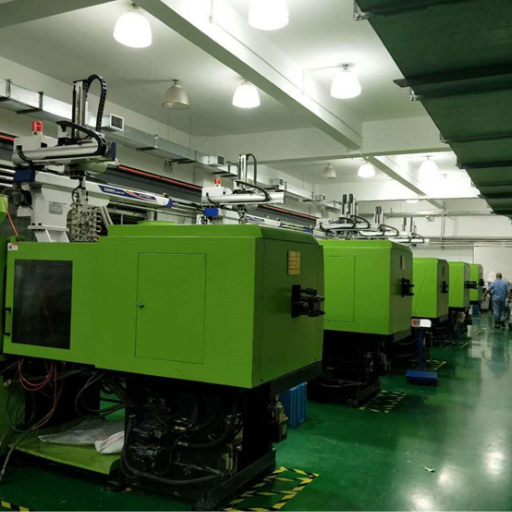
Choosing a micro injection molding machine for production is essential for achieving unparalleled precision and efficiency in manufacturing complex miniature components. These machines are engineered to handle high-performance thermoplastics with exceptional accuracy, ensuring that even the minutest details of a part are flawlessly replicated. The micro injection molding process minimizes material waste, enhances production consistency, and allows for rapid iterations, making it ideal for high-volume applications. Moreover, their capability to produce extremely small and intricate geometries at scale is invaluable across industries that require high precision, such as medical devices, electronics, and automotive parts. With advanced features like real-time monitoring and control of processing parameters, these machines not only ensure product quality but also facilitate compliance with stringent industry standards.
Advantages Over Traditional Molding Processes
Micro injection molding offers several advantages over traditional molding processes, making it the superior choice for manufacturing miniature components:
- Precision and Accuracy: Micro injection molding machines are capable of achieving tolerances as tight as ±5 microns, ensuring high precision in complex geometries.
- Material Efficiency: The process significantly reduces material waste with shot weights ranging from 0.01 grams to 1 gram, which not only lowers production costs but also aligns with sustainable practices.
- Cycle Time: Advanced micro injection molding machines offer rapid cycle times, often less than 4 seconds, enabling high production throughput which is crucial for mass manufacturing scenarios.
- Complex Design Capability: These machines excel at producing parts with intricate details, thin walls (down to 0.1 mm), and complex structures that are challenging for traditional molding methods.
- Real-Time Monitoring: State-of-the-art micro injection molding machines come equipped with real-time monitoring and control features, such as cavity pressure sensors and thermal imaging, to ensure consistent quality and adherence to specifications.
- Scalability: Micro molding is particularly well-suited for high-volume production, making it easier to scale operations while maintaining consistent part quality.
- Versatility in Material Use: These machines can process a diverse range of high-performance thermoplastics, including PEEK, LCP, and PPS, which are essential for demanding applications in medical, automotive, and electronic industries.
By offering unmatched precision, efficiency, and versatility, micro injection molding sets a new standard in the production of small, intricate components, ensuring high reliability and performance across various high-tech industries.
Ensuring High-Quality Precision in Micro Parts
To ensure high-quality precision in the production of micro parts through micro injection molding, manufacturers must focus on several technical aspects and adhere to rigorous standards. Here are the key points derived from top industry sources:
- Material Selection: Choosing the appropriate material is crucial for achieving precision in micro-molded parts. High-performance thermoplastics such as PEEK (Polyether Ether Ketone), LCP (Liquid Crystal Polymer), and PPS (Polyphenylene Sulfide) are favored due to their excellent mechanical properties and stability under thermal stress. It is essential to match the material properties with the target application’s requirements to ensure functionality and durability.
- Tooling Precision: The quality of the mold tooling significantly impacts the final part’s precision. Utilizing advanced machining technologies, such as Wire EDM (Electrical Discharge Machining) and High-Speed CNC (Computer Numerical Control) milling, enables the production of molds with tight tolerances, typically in the range of ±0.005 mm. Precision in mold fabrication ensures accurate replication of the desired micro features.
- Process Control: Employing real-time monitoring and advanced process control systems is vital. Modern micro injection molding machines are equipped with features like cavity pressure sensors, thermal imaging, and real-time data analytics. These capabilities allow manufacturers to monitor critical parameters, such as injection pressure, mold temperature, and cooling times, ensuring consistent quality and adherence to specifications. Typical cycle times for high-precision parts are maintained under 4 seconds to optimize throughput without compromising quality.
- Environment Control: Maintaining a controlled production environment reduces the risk of contamination and dimensional variability. Cleanroom manufacturing environments classified as ISO 7 or ISO 8 ensure that external factors do not adversely affect the micro molding process. Stable ambient conditions, including temperature and humidity control, are maintained to prevent material inconsistencies and warping.
- Post-Processing and Inspection: Implementing rigorous post-processing and inspection protocols guarantees that only conforming parts move forward in the production process. Techniques such as ultrasonic cleaning, laser measurement, and high-resolution microscopy are employed to detect and rectify any deviations from specifications. Dimensional accuracy and surface finish are validated against predefined quality criteria.
By adhering to these technical protocols and leveraging state-of-the-art technology, manufacturers can ensure the high-quality precision of micro parts, thereby meeting the stringent demands of medical, automotive, and electronic applications.
Cost Efficiency in Small Scale Production
Achieving cost efficiency in small-scale production necessitates a strategic approach encompassing several key areas. Firstly, optimizing material utilization and reducing waste through precise material selection and advanced molding techniques can significantly lower costs. Additionally, integrating automation in the production line minimizes labor expenses and increases throughput. Utilizing modular tooling systems that allow for quick changeovers between different parts can also enhance flexibility without substantial investments in new equipment. By leveraging scalable technology and maintaining rigorous quality control protocols, manufacturers can achieve a balance between cost efficiency and high-quality output, effectively addressing the economic challenges of small-scale production.
What Materials are Used in Micro Injection Molding?
Micro injection molding utilizes a variety of materials, each selected based on its specific properties and application requirements. Commonly used materials include thermoplastics such as Polyethylene (PE), Polypropylene (PP), Polycarbonate (PC), and Polyamide (PA). These materials are favoured for their excellent mechanical strength, durability, and ability to form intricate geometries with high precision. Additionally, liquid silicone rubber (LSR) is often employed due to its flexibility, biocompatibility, and resistance to extreme temperatures, making it ideal for medical and electronic applications. Advanced polymers such as Polyether Ether Ketone (PEEK) are also used when superior chemical resistance and mechanical performance are necessary. By carefully selecting the appropriate material, manufacturers can ensure the optimal performance and reliability of micro-molded components.
Popular Plastic Resins for Micro Molding
Polyethylene (PE)
Polyethylene is one of the most commonly used thermoplastics in micro molding due to its versatility and excellent properties. It exhibits high impact resistance, good chemical resistance, and low water absorption. Technical parameters for PE include a melting temperature range of 120-180°C and a tensile strength of 20-30 MPa. Its ease of processing and cost-effectiveness make it a preferred choice for a variety of applications, including packaging, automotive components, and medical devices.
Polypropylene (PP)
Polypropylene is favored for its fatigue resistance and semi-crystalline nature, which provides high mechanical strength and durability. It has a melting temperature of approximately 160-165°C and a tensile strength of around 30-40 MPa. Additionally, PP resists chemical corrosion, which is advantageous for laboratory equipment and automotive parts. Its lightweight nature further enhances its desirability for micro-molded components requiring balance between robustness and minimal mass.
Polycarbonate (PC)
Polycarbonate is renowned for its superior impact resistance and optical clarity. This thermoplastic boasts a high melting temperature range of 250-280°C and tensile strength between 60-70 MPa, making it suitable for applications demanding high performance under stress. Its inherent transparency and resistance to high temperatures make PC ideal for medical devices, electronic components, and optical instruments. The material’s ability to maintain structural integrity under high thermal loads ensures its continued utility in demanding environments.
By selecting these plastic resins based on their technical parameters and performance characteristics, manufacturers can effectively meet the precise requirements of various micro-molding applications.
Using Thermoplastic and Silicone for Micro Parts
When selecting materials for micro parts, both thermoplastics and silicone offer distinct advantages and can be configured to meet specific technical requirements.
Thermoplastics
Thermoplastics such as polypropylene (PP) and polycarbonate (PC) are ideal for micro-molding due to their mechanical properties and processing ease.
Polypropylene (PP):
- Melting Temperature: 160-165°C
- Tensile Strength: 30-40 MPa
- Key Benefits: Fatigue resistance, chemical corrosion resistance, lightweight, high mechanical strength
Polycarbonate (PC):
- Melting Temperature: 250-280°C
- Tensile Strength: 60-70 MPa
- Key Benefits: Superior impact resistance, optical clarity, high-temperature resistance, structural integrity under stress
Silicone
Silicone exhibits unique properties, making it suitable for applications where flexibility, biocompatibility, and chemical stability are paramount.
Silicone:
- Operating Temperature Range: -60°C to 250°C
- Tensile Strength: Variable (typically around 4.5 MPa for room-temperature vulcanizing silicone)
- Key Benefits: Excellent flexibility, high thermal stability, biocompatibility, chemical inertness
By leveraging the specific technical parameters outlined, manufacturers can justify their material selection to meet the functional and environmental demands of various micro-molding applications. Thermoplastics offer robustness and high mechanical performance, while silicone provides flexibility and stability across a wide range of conditions. Each material’s properties ensure the precision and durability required for micro parts.
Material Selection for Medical Devices and Advanced Applications
When selecting materials for medical devices, research from top websites such as the FDA, MedTech Dive, and the National Institute of Health (NIH) consistently emphasizes the critical parameters to be evaluated. Drawing from these authoritative sources, here are the primary factors and technical parameters:
- Biocompatibility:
- Materials must not provoke an immune response when in contact with body tissues.
- Common biocompatible materials include medical-grade silicones and certain thermoplastics like polyethylene (PE) and polyether ether ketone (PEEK).
- Sterilization Compatibility:
- The ability to withstand various sterilization methods (e.g., autoclaving, ethylene oxide) is crucial.
- Polypropylene (PP) and polycarbonate (PC) have proven compatibility with multiple sterilization techniques, ensuring their durability and safety.
- Mechanical Properties:
- Strength, flexibility, and durability are essential for functionality and longevity.
- Polypropylene (PP):
-
- Tensile Strength: 30-40 MPa
- Key Benefits: Fatigue resistance, chemical resistance
- Polycarbonate (PC):
- Tensile Strength: 60-70 MPa
- Key Benefits: Impact resistance, structural integrity
- Thermal Properties:
- High operational temperature ranges are required to maintain performance in varied environments.
- Silicone:
- Operating Temperature Range: -60°C to 250°C
- Key Benefits: Thermal stability, chemical inertness
- Chemical Resistance:
- Resistance to various chemicals and bodily fluids is necessary to avoid degradation.
- Polypropylene and silicone are noted for their chemical inertness and resistance.
- Regulatory Compliance:
- Materials must be compliant with regulatory standards like those from the FDA.
- Ensuring materials are certified for biocompatibility (ISO 10993) and other relevant standards is critical.
By aligning these considerations with the technical metrics, one can justify the material selection for medical devices and advanced applications, ensuring safety, effectiveness, and regulatory compliance.
How to Optimize and Automate Micro Injection Molding?
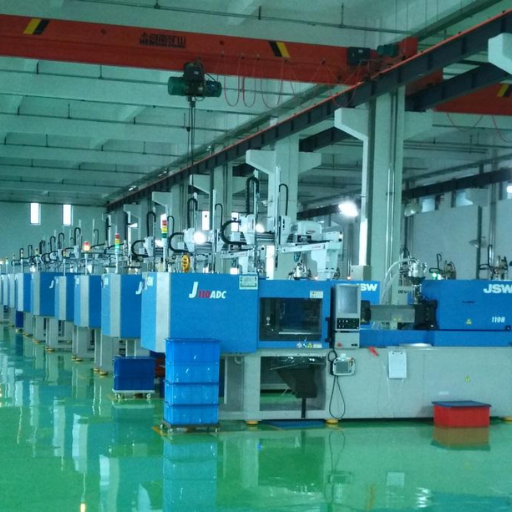
Optimizing and automating micro injection molding involves several critical steps:
- Process Parameter Optimization:
- Temperature Control:
-
- Precisely control mold and melt temperatures to ensure minimal material degradation and optimal flow characteristics.
- Injection Speed and Pressure:
- Adjust injection speed and pressure to minimize defects such as flash, short shots, or voids.
- Cooling Time:
- Optimize cooling time to balance cycle time against part quality, ensuring thorough solidification without warping.
- Material Selection:
- Use high-quality thermoplastics with consistent properties suitable for micro-scale applications, ensuring repeatability and precision.
- Automation in Production:
- Robotic Handling:
- Integrate robotic systems for parts handling, reducing human error and ensuring consistent production cycles.
- In-line Quality Control:
- Employ sensors and vision systems for real-time monitoring and inspection, promptly identifying defects and allowing for immediate corrective actions.
- Tooling Design:
- Design molds with precision engineering to ensure durability and longevity under repeated usage. Utilize advanced materials and coatings for enhanced mold life and part quality.
- Data-Driven Process Control:
- Implement advanced monitoring systems to collect and analyze data on process variables. Utilize this data for predictive maintenance and continuous process improvements.
By focusing on these aspects, manufacturers can achieve greater efficiency and reliability in micro injection molding, resulting in high-quality products and reduced production costs.
Key Parameters to Optimize the Molding Process
To optimize the molding process effectively, several technical parameters must be meticulously controlled and monitored. Here are the critical parameters along with their justifications:
- Temperature Control:
-
- Barrel Temperature:
-
- Maintain a precise range, typically between 160°C to 320°C, depending on the material, to ensure proper melting and flow characteristics.
- Mold Temperature:
- Injection Speed:
-
- Adjust to suit the material flow rate and the complexity of the mold, typically between 50 mm/s to 300 mm/s. Higher speeds can reduce cycle time but may require careful management to avoid defects.
- Injection Pressure:
- Cooling Time:
- Material Choice:
- Robotic Handling:
-
- Implement robotic arms with precision positioning and repeatability within ±0.1 mm to minimize human error and enhance consistency.
- In-line Quality Control:
- Mold Materials:
-
- Use high-grade steel such as H13 or P20, and advanced coatings like PVD or CVD to improve longevity and part quality.
- Geometrical Precision:
- Monitoring Systems:
-
- Employ advanced sensors and software platforms to continuously collect and analyze data on all relevant process parameters.
- Predictive Maintenance:
-
- Utilize collected data to perform maintenance based on actual mold and machine conditions, reducing downtime and preventing unexpected failures.
By meticulously managing these key parameters, manufacturers can significantly enhance the efficiency, reliability, and quality of the injection molding process, ensuring superior product outcomes and optimized production costs.
Benefits of Automating the Injection Process
Automating the injection molding process offers a multitude of advantages that can significantly enhance manufacturing operations. Firstly, automation increases productivity by enabling continuous, high-speed production with minimal human intervention. This ensures a consistent output rate and reduces cycle times, leading to higher throughput. Secondly, it improves precision and quality by leveraging advanced robotic and sensor technologies that ensure consistent and repeatable operations. This minimizes defects and enhances the overall quality of the molded parts. Thirdly, automation enhances safety by reducing the need for human operators to interact with potentially hazardous machinery, thereby decreasing the risk of workplace injuries. Additionally, automation facilitates better data collection and real-time monitoring, allowing for immediate adjustments and predictive maintenance, which reduces downtime and extends equipment life. Overall, automating the injection molding process leads to increased efficiency, reduced operational costs, and superior product quality, making it a highly beneficial investment for manufacturers aiming to stay competitive in the market.
Innovative Technologies in Micro Injection Molding Machines
Innovative technologies play a crucial role in advancing the capabilities of micro injection molding machines. As a professional in the field, I’ve identified several cutting-edge advancements that are shaping the industry. Firstly, the integration of precision-controlled electric drives and actuators allows for unparalleled accuracy and repeatability, which is essential for producing highly intricate micro-sized components. Secondly, the incorporation of advanced material handling systems ensures that even the smallest quantities of raw materials are precisely metered and fed into the mold, reducing waste and improving material efficiency. Thirdly, state-of-the-art process monitoring and control systems, often powered by sophisticated software and AI algorithms, enable real-time adjustments and predictive maintenance. This not only enhances the consistency and quality of the molded parts but also maximizes machine uptime. Additionally, innovations in tooling technology, such as the use of high-precision molds with micro-scale features, facilitate the production of complex geometries that were previously unattainable. Collectively, these pioneering technologies are propelling micro injection molding towards new heights of precision, efficiency, and versatility.
What Are the Top Micro Injection Molding Machine Brands?
When discussing the leading brands in the micro injection molding machine industry, several names stand out due to their technological advancements and industry reputation. Firstly, Arburg is renowned for its innovative solutions and high-precision molding capabilities. Similarly, Engel is another top contender, offering machines that utilize advanced control systems for superior accuracy and efficiency. Sumitomo (SHI) Demag also holds a prominent position in the market, known for their robust and reliable machinery tailored for micro-scale applications. Additionally, Wittmann Battenfeld and Fanuc are notable for their cutting-edge technologies and continuous efforts in pushing the boundaries of micro injection molding. These brands collectively set the industry standards and continue to drive innovation in this highly specialized field.
Featuring Babyplast: Starter Machines for Desktop Injection
When evaluating Babyplast as a supplier for desktop injection molding machines, it is clear that their products are tailored for high precision and ease of use. As the inventor of the first micro injection molding machine, Babyplast has a strong reputation for innovation in the field. Their machines are designed to be compact yet robust, making them ideal for both industrial settings and educational purposes. The Babyplast 6/12, for example, offers exceptional precision and flexibility, perfect for producing small, intricate parts. Additionally, their user-friendly interface and advanced control systems facilitate seamless production workflows. Babyplast’s commitment to quality and continuous improvement ensures that their machines meet the stringent demands of modern micro injection molding applications. Therefore, Babyplast stands out as a reliable choice for those starting with desktop injection molding, offering both technical excellence and operational efficiency.
Advanced Solutions from Arburg for High Precision
Arburg has established itself as a leader in high-precision injection molding, offering an extensive range of advanced solutions designed to meet the most stringent industry requirements. Their portfolio includes the ALLROUNDER series, which is engineered for unparalleled precision and flexibility. These machines feature sophisticated control systems that ensure consistent part quality even in highly complex molding processes.
Key Technical Parameters:
- Injection Pressure: Arburg’s ALLROUNDER machines can achieve injection pressures up to 2500 bar, enabling the production of intricate and precise parts.
- Clamping Force: With clamping forces ranging from 125 kN to 5000 kN, these machines are suitable for a wide range of applications, ensuring optimal part integrity and minimal defects.
- Repeatability: Arburg machines boast a repeatability of ±0.1%, making them ideal for high-precision manufacturing where consistency is critical.
- Cycle Time: Advanced servo-hydraulic and electric drives reduce cycle times significantly, enhancing productivity without compromising on quality.
Arburg also leverages advanced automation solutions like their SELOGICA control system, which integrates seamlessly with peripheral devices for automated part removal, quality checks, and material handling. This holistic approach increases efficiency and reduces the potential for human error. Their focus on Industry 4.0 principles further enhances operational transparency and allows for real-time monitoring and optimization of production parameters.
Overall, Arburg’s commitment to precision, combined with their robust technical capabilities, makes them a preferred choice for industries demanding the highest quality standards. Their machines are not only technologically advanced but also offer proven reliability and longevity, ensuring a high return on investment for manufacturers.
Custom and Prototype Production with HAITIAN
HAITIAN’s comprehensive range of injection molding machines encompasses both custom and prototype production, catering to diverse manufacturing needs. Their focus on flexibility and precision ensures that even the most complex and bespoke designs can be efficiently realized. With clamping forces extending from 600 kN to 66,000 kN, HAITIAN machines are adept at handling varied production scales. Key to their capability in custom production is their advanced control systems, such as the innovative Mars Technology and Zhafir Venus Series, which offer unparalleled precision and control. This allows manufacturers to maintain strict tolerances and achieve high levels of repeatability, crucial for prototype development where exact specifications are mandatory. Furthermore, HAITIAN’s ability to provide real-time data analytics and adaptive process control through their KEBA controller enhances operational efficiency, ensuring that custom and prototype production meets the highest quality standards.
Frequently Asked Questions (FAQs)
Q: What is a micro molding machine?
A: A micro molding machine is a specialized plastic injection molding machine used to manufacture tiny, high-precision plastic parts. It’s especially useful for producing parts with a minimal part size and intricate details.
Q: How does micro-injection differ from traditional injection molding?
A: Micro-injection is designed to manufacture very small parts, usually less than one gram, with precise features. Traditional injection molding typically handles larger parts and volumes, whereas micro-injection deals with tiny parts with high accuracy.
Q: What industries benefit from using micro molding machines?
A: Industries like medical and orthopedic greatly benefit from micro molding machines, as these can manufacture tiny, precise parts required for implants and other medical devices. This technology is also used in electronics and micro-mechanics.
Q: Can micro molding machines produce multi-cavity molds?
A: Yes, micro molding machines can be configured to use multi-cavity molds to produce multiple parts in a single cycle, increasing the production efficiency and reducing lead times.
Q: What materials are commonly used with micro molding machines?
A: Common materials include polyoxymethylene and other engineering plastics that can be precision molded. These materials are chosen based on their mechanical properties and compatibility with the micro-molding process.
Q: What are the advantages of using all-electric micro molding machines?
A: All-electric micro molding machines provide high precision, energy efficiency, and consistency, which are crucial for manufacturing intricate, tiny parts. They also have shorter residence times, leading to better material quality and reduced defects.
Q: How do micro molding machines achieve high precision in part design?
A: Micro molding machines achieve high precision through advanced features like precisely controlled plasticizing and pressurizing, sophisticated mold designs, and integrated CNC machining for detailed part designs.
Q: How can micro molding machines customize production runs?
A: Micro molding machines can be customized to match specific production needs by adjusting parameters like mold design, injection pressures, and cycle times to manufacture various part sizes and complexities, both horizontally and vertically oriented.
Q: What are the key components of a micro molding machine?
A: Key components include the barrel for plasticizing, platen for mold positioning, ejector for part removal, and control systems for managing the injection process. These parts work in concert to produce high-precision plastic parts.
Q: What are the cost-saving benefits of using micro molding machines?
A: Cost savings are achieved through shorter lead times, high production efficiency, reduced material wastage, and the ability to produce complex parts with minimal labor input. In-house manufacturing with micro molding machines also eliminates outsourcing costs.




